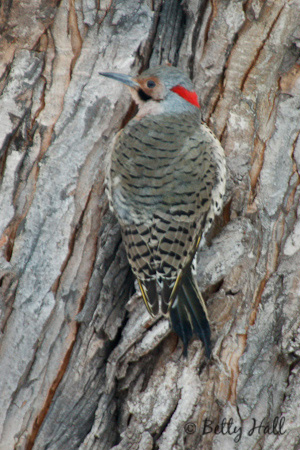It was a special treat last week to watch a northern flicker (Colaptes auratus) on the silver maple. We only see them occasionally. The black “mustache” indicates this one was a male.
He was hunting for insects among the many cracks and crevices of the bark. It’s hard to imagine there was much to find, but I understand there are lots of winter insects hidden in tree bark, under leaves, and in dead plant stalks. I’m amazed to think that eggs, small caterpillars, chrysalises, and adult insects can survive the cold.
I enjoyed a recent article on winter insects by Dr. Douglas Tallamy published in the Wild Ones Journal. It reminds me of the importance of insects and how I can contribute to their chances for surviving the winter months. The growth from last year’s garden looks scraggly now, and that’s OK with me. I appreciate it as a nursery for next summer’s butterflies and other insects.



Betty, wonderful image, and this must be esp, I was just getting ready to email you,,,just had a Blue Heron in my backyard,,,there is a story behind it will tell you about it when I see you.
take care
Linda
Sounds exciting, Linda. I look forward to hearing more.
Betty, I consider it a treat when I occasionally see a red headed woodpecker on my maple, or feeding on suet.
For many years I kept a scraggly growth at the back of our yard (grass and weeds, not garden!) to accommodate rabbits. I didn’t think about it also being a refuge for insects.
I learn something with each of your blogs, including the proper name which I will never remember!
David, glad to hear of your ‘wildlife refuge’. I think it’s easy to take insects for granted. Without insects, most baby birds, including hummingbirds, would not survive. According to E. O. Wilson, “If insects were to vanish, the environment would collapse into chaos.”